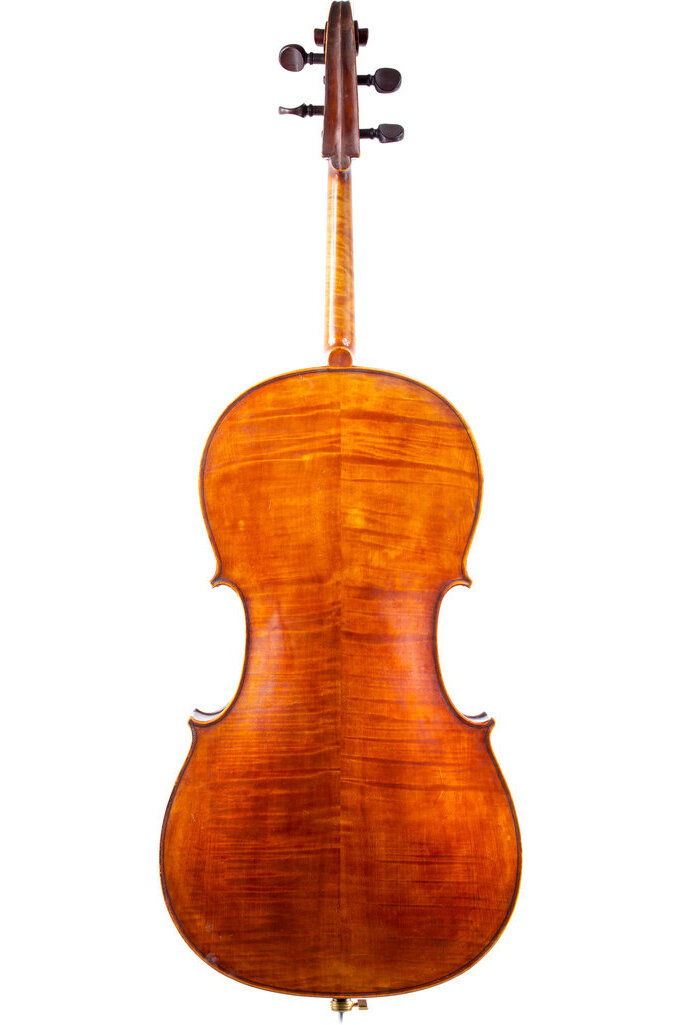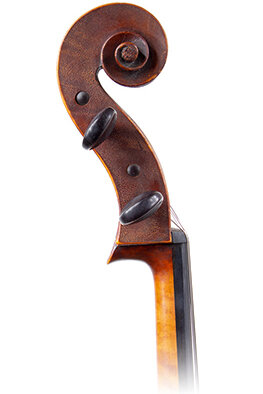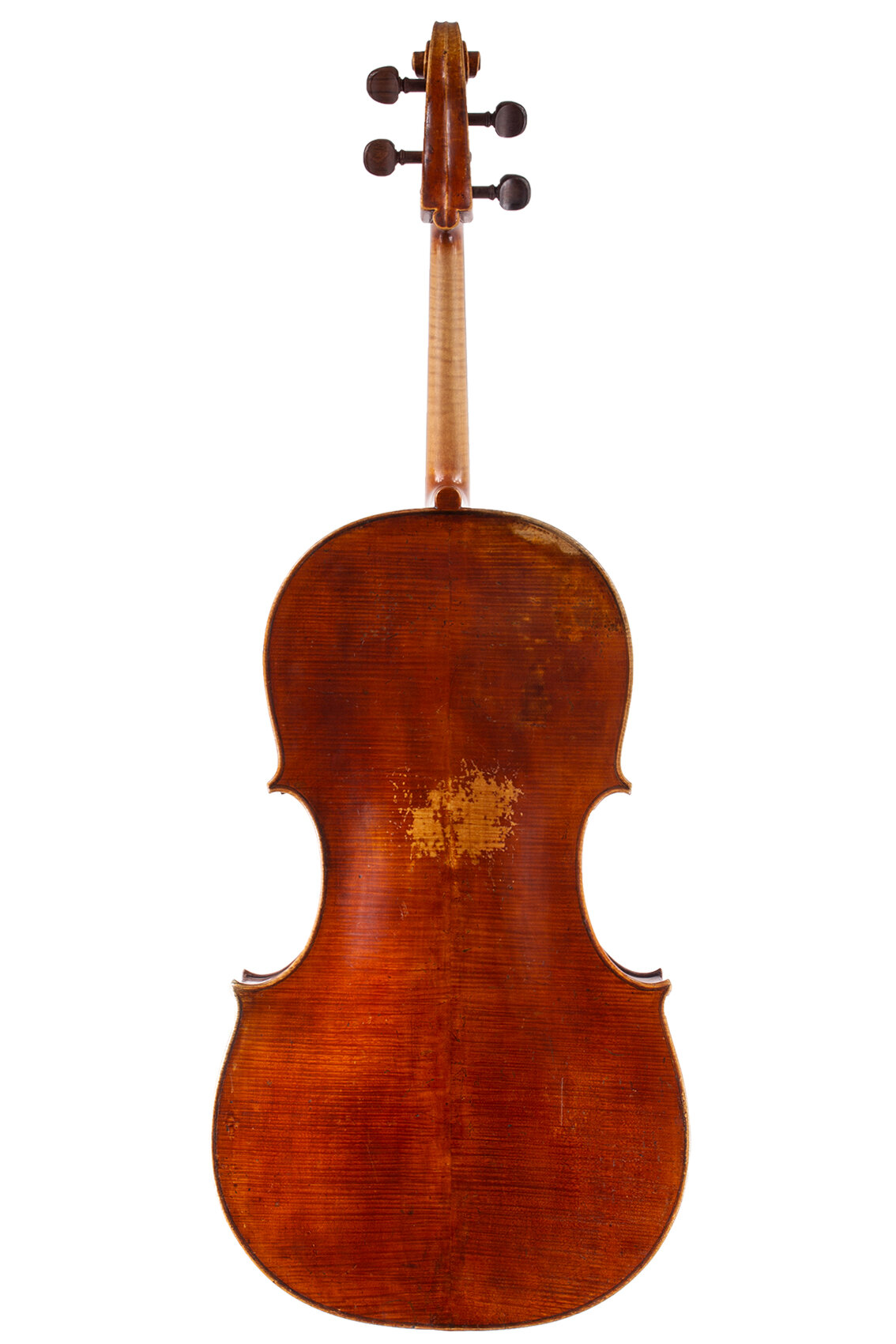 Image 1 of 3
Image 1 of 3

 Image 2 of 3
Image 2 of 3

 Image 3 of 3
Image 3 of 3




Cello by Thomas Kennedy, London, 1847
Thomas Kennedy was the best and most productive member of a family of violin makers in London. Thomas was the eldest son of John Kennedy, born in 1784, and began his career as his father's apprentice before moving to the workshop of Thomas Powell. By 1802 he was associated with William Forster III, the leading violin maker and dealer in London at the time. In 1804 he established his own business.
Kennedy developed a distinctive model for his cellos, which remain the most sought-after of all his output. Departing from the dominant Stainer model, he used a pattern which seems to be based on a cut-down Amati form. Retaining the long, open centre bouts of the seventeenth century Amati cellos, which generally have a back length of around 31" in original form, Kennedy's model has severely reduced upper and lower bouts, which are nevertheless rendered in a very elegant way, with long corners and very well placed and neatly cut soundholes in the Amati style. His scrolls are also distinctive, fashioned in an almost improvised form, with quite different balance and geometry to the volute from one instrument to another, and often a very emphatic, deeply recurved chin.
This cello is very powerful with a bright and direct sound.
LABEL:
Thos Kennedy, London
Signed internally with name and date (1847) on bottom bout
MEASUREMENTS:
Back length 762mm / Upper bout 347mm / Lower Bout 440mm / String length 686mm
Thomas Kennedy was the best and most productive member of a family of violin makers in London. Thomas was the eldest son of John Kennedy, born in 1784, and began his career as his father's apprentice before moving to the workshop of Thomas Powell. By 1802 he was associated with William Forster III, the leading violin maker and dealer in London at the time. In 1804 he established his own business.
Kennedy developed a distinctive model for his cellos, which remain the most sought-after of all his output. Departing from the dominant Stainer model, he used a pattern which seems to be based on a cut-down Amati form. Retaining the long, open centre bouts of the seventeenth century Amati cellos, which generally have a back length of around 31" in original form, Kennedy's model has severely reduced upper and lower bouts, which are nevertheless rendered in a very elegant way, with long corners and very well placed and neatly cut soundholes in the Amati style. His scrolls are also distinctive, fashioned in an almost improvised form, with quite different balance and geometry to the volute from one instrument to another, and often a very emphatic, deeply recurved chin.
This cello is very powerful with a bright and direct sound.
LABEL:
Thos Kennedy, London
Signed internally with name and date (1847) on bottom bout
MEASUREMENTS:
Back length 762mm / Upper bout 347mm / Lower Bout 440mm / String length 686mm















